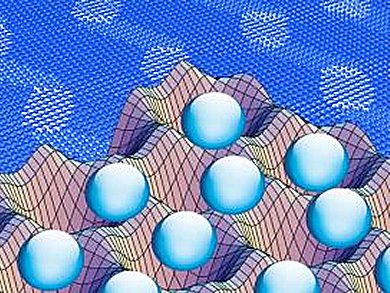Erio Tosatti, International School for Advanced Studies (SISSA), Trieste, Italy, and colleagues provide a new tool to better understand how sliding friction works in nanotribology. Nanotribology is a branch of mechanical engineering, studying the science and engineering of interacting surfaces in relative motion at the nanometer scale.
By theoretically studying colloidal crystals of charged microparticles over laser-generated periodic or quasi-periodic potentials, friction forces were analyzed through molecular dynamics simulations with accuracy never experienced before. Colloidals differentiate according to the state of the dispersed and dispersing substance (liquid, solid, or gaseous). The simulations allow understanding what happens when a colloidal monolayer slides against an optical reticle modifying some parameters such as surface corrugation, drift speed or contact geometry.
Before this simulation was performed, only some recent experiments carried out in Germany tried to describe the behavior of individual particles of a colloid in friction conditions, but never in such a precise way.
Image: ©: International School of Advanced Studies (SISSA)
- Static and dynamic friction in sliding colloidal monolayers,
Andrea Vanossi, Nicola Manini, Erio Tosatti.
Proc. Nat. Acad. Sci. 2012, 109 (41),16429-16433.
DOI: 10.1073/pnas.1213930109



